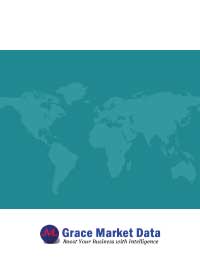North America preventive vaccines market is projected to grow by 6.3% annually in the forecast period and reach $46.90 billion by 2032, driven by the rising prevalence of several infectious diseases, rising R&D investment and technological advancement in vaccination technologies, rising need for preventive vaccines such as COVID-19 vaccines, and the increasing healthcare expenditure.
Highlighted with 52 tables and 51 figures, this 132-page report “North America Preventive Vaccines Market 2022-2032 by Vaccine Type, Disease, Administration, Patient, and Country: Trend Forecast and Growth Opportunity” is based on a comprehensive research of the entire North America preventive vaccines market and all its sub-segments through extensively detailed classifications. Profound analysis and assessment are generated from premium primary and secondary information sources with inputs derived from industry professionals across the value chain. The report is based on studies on 2020-2022 and provides forecast from 2023 till 2032 with 2022 as the base year. (Please note: The report will be updated before delivery so that the latest historical year is the base year, and the forecast covers at least 5 years over the base year.)
In-depth qualitative analyses include identification and investigation of the following aspects:
- Market Structure
- Growth Drivers
- Restraints and Challenges
- Emerging Product Trends & Market Opportunities
- Porter’s Fiver Forces
The trend and outlook of North America market is forecast in optimistic, balanced, and conservative view by taking into account of COVID-19 and Russia-Ukraine conflict. The balanced (most likely) projection is used to quantify North America preventive vaccines market in every aspect of the classification from perspectives of Vaccine Type, Disease, Administration, Patient, and Country.
Based on Vaccine Type, the North America market is segmented into the following sub-markets with annual revenue ($ mn) for 2022-2032 included in each section.
- Live/Attenuated Vaccines
- Inactivated Vaccines
- Subunit Vaccines
- Toxoid Vaccines
- Conjugate Vaccines
- mRNA Vaccines
- Recombinant Vector Vaccines
- Other Vaccines
Based on Disease, the North America market is segmented into the following sub-markets with annual revenue ($ mn) for 2022-2032 included in each section.
- Pneumococcal Disease
- Poliovirus
- Hepatitis
- Influenza
- Measles, Mumps, and Rubella (MMR)
- Varicella
- Human Papilloma Virus
- COVID-19
- Other Diseases
By Administration, the North America market is segmented into the following sub-markets with annual revenue ($ mn) for 2022-2032 included in each section.
- Intramuscular Route
- Subcutaneous Route
- Oral Route
- Intravenous Injection
- Other Administration Routes
By Patient, the North America market is segmented into the following sub-markets with annual revenue ($ mn) for 2022-2032 included in each section.
- Pediatric Vaccines
o Pneumococcal
o Measles, Mumps, and Rubella (MMR)
o Varicella
o Hepatitis
o Poliovirus
o Haemophilus Influenzae B (HIB)
o Other Diseases
- Adult Vaccines
o Influenza
o Cervical Cancer
o Hepatitis
o Zoster
o Other Diseases
Geographically, the following national/local markets are fully investigated:
- U.S.
- Canada
- Mexico
For each key country, detailed analysis and annual revenue ($ mn) are available for 2022-2032. The breakdown of national markets by Vaccine Type, Disease, and Administration over the forecast years are also included.
The report also covers the current competitive scenario and the predicted trend; and profiles key vendors including market leaders and important emerging players.
Selected Key Players:
AstraZeneca plc
Bavarian Nordic A/S
China National Biotec Group Company Ltd.
CSL Ltd.
Daiichi Sankyo Co. Ltd
Emergent BioSolutions Inc.
GlaxoSmithKline plc
Johnson & Johnson
Merck & Co.
Moderna Inc.
Novavax, Inc.
Pfizer Inc.
Sanofi SA
Takeda Pharmaceutical Co. Ltd.
(Please note: The report will be updated before delivery so that the latest historical year is the base year, and the forecast covers at least 5 years over the base year.)



